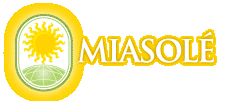Two Silicon Valley start-ups that are poised to deliver more cost-effective solar cells to the red-hot solar market have scored venture capital from leading local firms Kleiner Perkins and Mohr Davidow.
(Update: Friday’s Mercury News story on this is here or here)
Here’s the scoop:  Nanosolar, of Palo Alto has won $20 million in a round led by Mohr, Davidow Ventures. Other investors include Japanese engineering conglomerate Mitsui, and OnPoint, the U.S. Army’s venture fund. We wrote about Nanosolar recently here.
Nanosolar, of Palo Alto has won $20 million in a round led by Mohr, Davidow Ventures. Other investors include Japanese engineering conglomerate Mitsui, and OnPoint, the U.S. Army’s venture fund. We wrote about Nanosolar recently here.
 Miasole, of San Jose, meanwhile, has raised about $16 million in a round led by Kleiner Perkins Caufield & Byers. We wrote about them in a broader story last year, here.
Miasole, of San Jose, meanwhile, has raised about $16 million in a round led by Kleiner Perkins Caufield & Byers. We wrote about them in a broader story last year, here.
This is good news, because it suggests the cutting-edge technology developed by these companies — thin-foil instead of bulky silicon-based panels — is really going to be viable soon. Instead of years out, as some had assumed, this stuff will be delivered as soon as this year, we’re told. That’s great, because it creates a virtuous cycle: If the cells are as cheap as the companies say they are, government subsidies will be reduced, and large companies will see the economic benefit of buying the solar cells for their rooftops. Slowly, homeowners will start buying too. It’s great for the environment, and for our long-term supply of power.
Now, Miasole’s chief executive David Pearce tells us that the two firms, Kleiner and Mohr Davidow, both were seeking to invest in Miasole (he called it a “bake-off”), and that he ended up taking money from Kleiner. We hasten to add, we don’t know any more details. Perhaps the interest was because Miasole’s technology has been used successfully in the disk-drive and optical industries, and so it was a safer bet at the margin, than Nanosolar, which is setting its own course. Perhaps not. Both are using the copper alloy called CIGS for their solar cell semiconductor material. (Update II: MDV’s Erik Straser led the investment in Nanosolar, while we’re told Kleiner’s Aileen Lee led the investment in Miasole. Notworthy because we mentioned them both here.)
But the people we have talked with about the market lately, including Mohr Davidow’s Straser, and Barry Cinnamon, of Akeena, one of the nation’s largest installers, all agree…
…that the market is red-hot: You’ll sell whatever your produce, because of significant excess demand. So there’s more than enough room for two players in a solar market that is around $5 billion this year, and likely to be $6 billion next year.
Note: DayStar Technologies, a public company of Halfmoon, New York, which also produces silicon-free solar cells on foil, said it had gotten an order from Blitzstrom GmBH, a German company for about $60 million. Be cautious of this though — despite the fact the company’s shares rocketed 61 percent today. Because apparently the company hasn’t even delivered a product yet. See the big “safe harbor statement” at the bottom of its announcement, saying it is subject to “risks” and “uncertainties.” As both Pearce and Nanosolar CEO Martin Roscheisen told us, it’s not about the technology at this point, it’s all about the production process — making it all run smoothly at an economy of scale that will keep the cells as cheap as possible.
Update III: Here’s VentureWire (sub req) on the Nanosolar investment.
Update IV: Gillmor on this, and the problem of patents.
Update V: Martin, of Nanosolar, has written in to address some of the questions posed in comments. Here are his answers:
“What is the approximate efficiency of the copper-indium-gallium-diselenide material?”
See http://www.nrel.gov/ncpv/thin_film/pn_techbased_copper_indium_diselenide.html
“With 19.5% efficiency under standard test conditions, the best CIGS cell is about as efficient as the best polycrystalline-silicon cell.”
–> CIGS can be as efficient (and durable) as conventional solar cells. CIGS cells can be almost 20% efficient — however, this is at laboratory scale and uses fairly expensive process technology. Companies that seek to produce CIGS modules commercially will generally initially shoot for the 12-15% range as the sweetspot that optimally trades off cost and performance. In this range, CIGS modules are still as efficient as the bulk of the silicon modules on the market today. With further R&D, modules as efficient as 20% can then come to market. [Note that the best other thin-film module on the market today, Unisolar’s, is 6.2-6.4% efficient…so CIGS modules will be essentially twice as efficient.]

